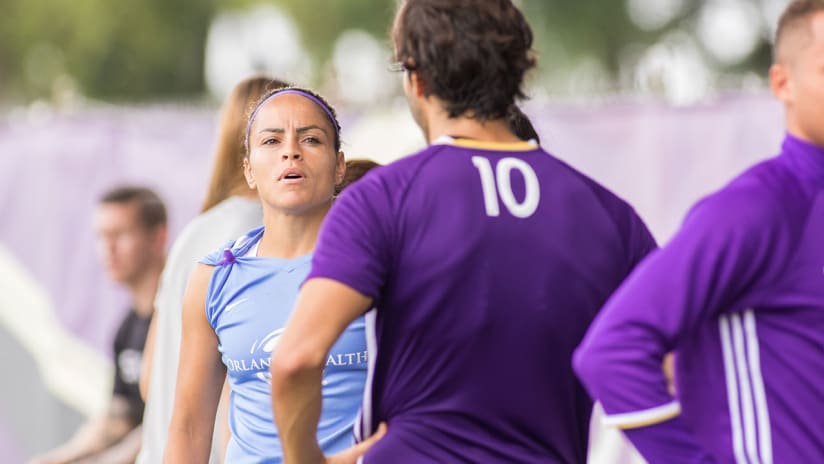Orlando City Soccer Club is one of three organizations in the United States that creates a relationship between Major League Soccer (MLS) and the National Women’s Soccer League (NWSL). Orlando, along with Portland and Houston, have established a model that many may seek to mimic in the future-- a model that creates a community of players rather than a single team.
Orlando Pride Head Coach Tom Sermanni knows the kind of impact that a strong domestic league can have, especially when it comes to the national team players. When the NWSL first started, Sermanni was the head coach of the U.S Women’s National Team and he admits that some of the players were nervous about the potential of the league. But a relationship with MLS and the U.S Soccer Federation has helped boost both leagues and has increased the stability of the women’s league.
“I think what it does is it helps solidify what a real club is these days,” Sermanni said “You’ve now got all the elements of a real, proper football business. And each part… adds a different connection to the community. The female game is different. The actual football isn’t different, but the game is different. The players bring a different entity to the organization. So, the female players bring a whole different dynamic to the team, not just on the field, but off the field. Because they have a different connection to the community, and this is very much a community club. So, I think having both in a business sense and to grow the business and the soccer side, I think it’s a big benefit to the club. If it’s done properly, and this is a club that does that.”
The NWSL benefitted tremendously from adding Orlando to their growing market-- NWSL Commissioner Jeff Plush has stated on numerous occasions that many new teams are looking to join the league. Some of the rumors include other MLS squads looking to expand, while some think that the latest market could be a stand alone women’s team. While partnering with an MLS club certainly gives marketing and financial stability to a new women’s team, Sermanni insists that it is not the only path forward.
“I don’t think you can go completely with one model,” Sermanni said. “But I think there are a lot of benefits to having an MLS, NWSL connection provided a club embraces a culture that unites those teams… You either have to do it and embrace it or don’t do it. And I think there’s a model for both.”
Currently, only three teams in the NWSL are partnered with an MLS squad. That means seven out of the ten teams-- by far the majority-- stand on their own. Some have managed to find great success, while others are still struggling. MLS-linked clubs get the benefit of using bigger and nicer stadiums, and combined marketing. The teams with the highest attendance this season were the three squads linked to MLS clubs. But out of the four playoff teams, only Portland had MLS ties.
Even with the success of recent MLS-linked clubs, Sermanni doesn’t think that’s the only system that works. He thinks the league’s emphasis moving forward shouldn’t be on what kind of club they are, but rather what playing standards they meet.
“I think if another team is coming into the league, what’s critical for our league is to adhere to certain standards,” Sermanni said. Field condition and treatment of players is crucial.
Next season, the league will most likely stick with the current ten teams before looking to expand again. In the meantime, MLS will introduce two new teams-- Minnesota United FC and Atlanta United. The future for both of these leagues is certainly bright.





